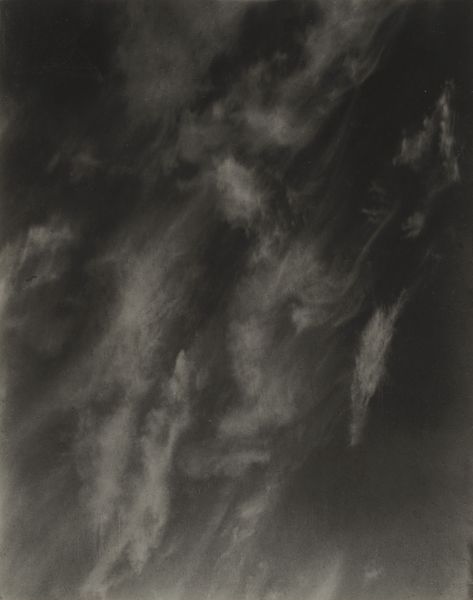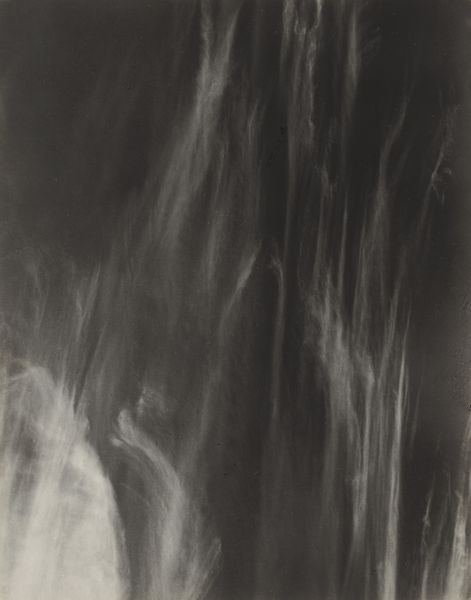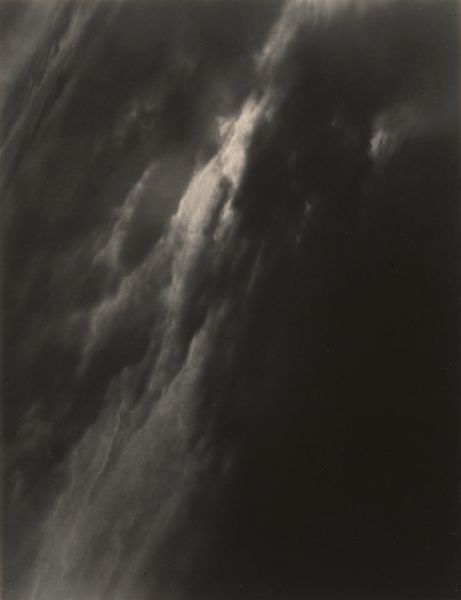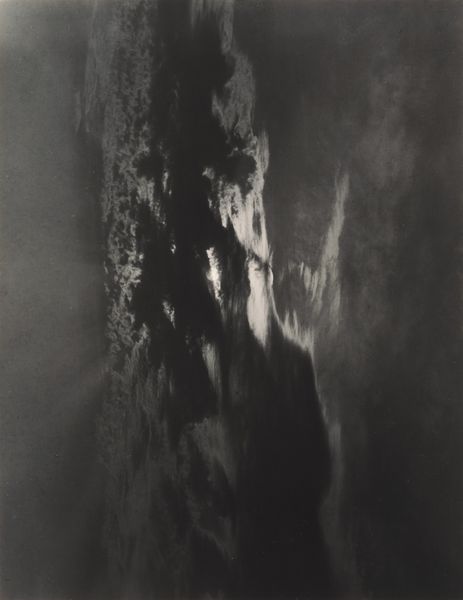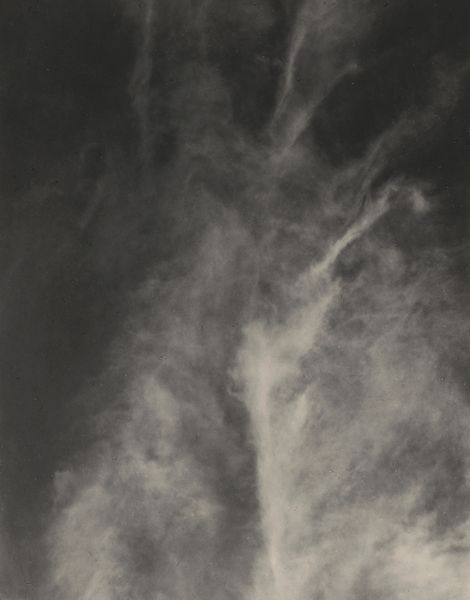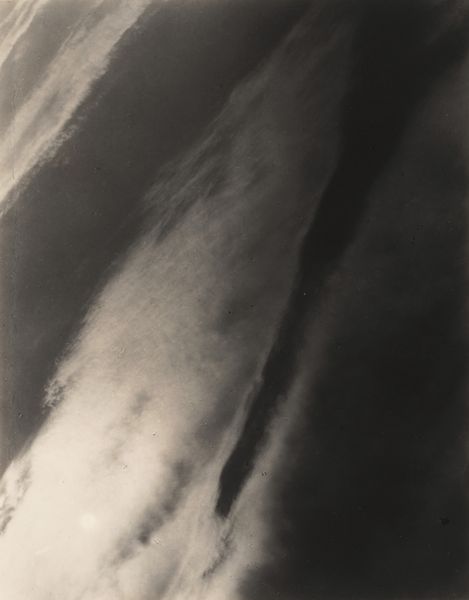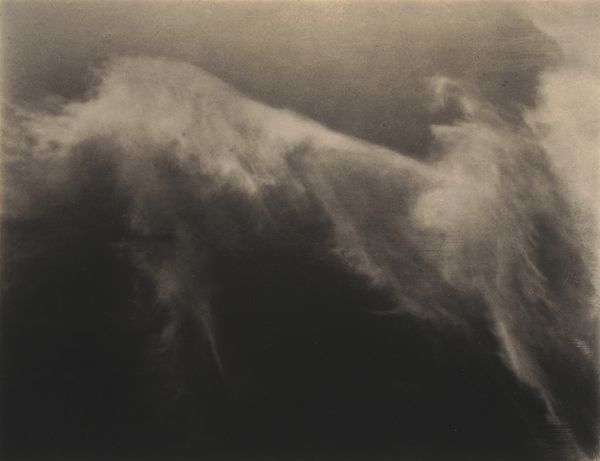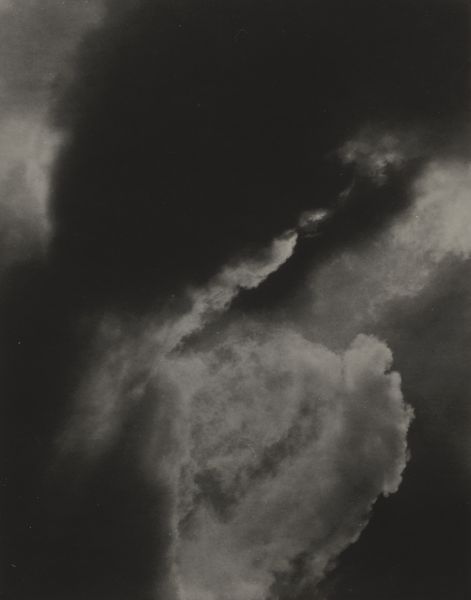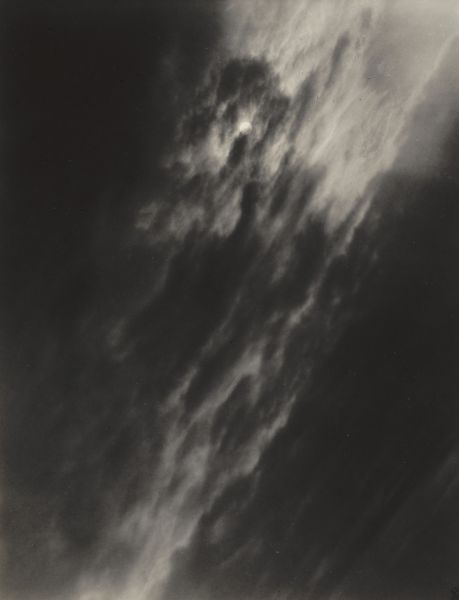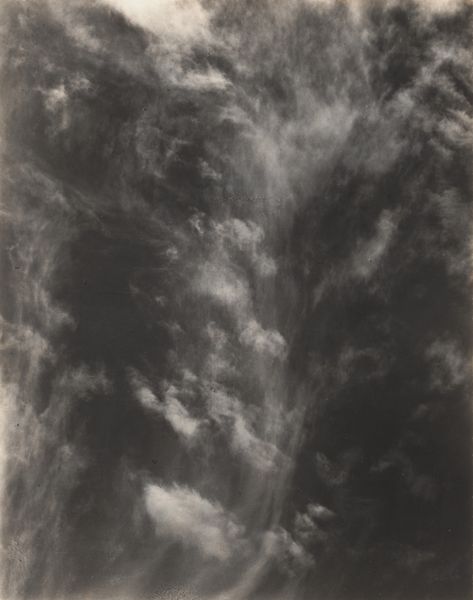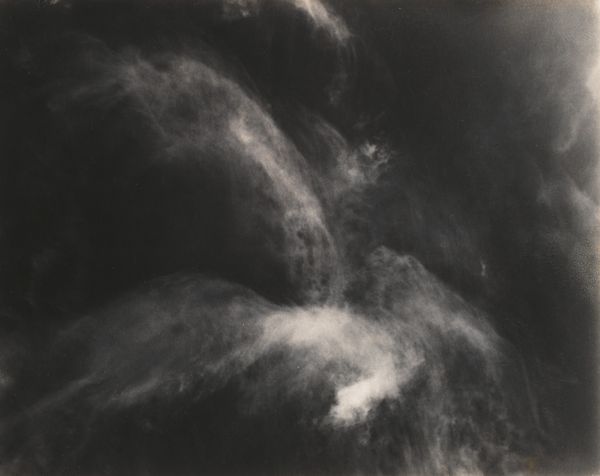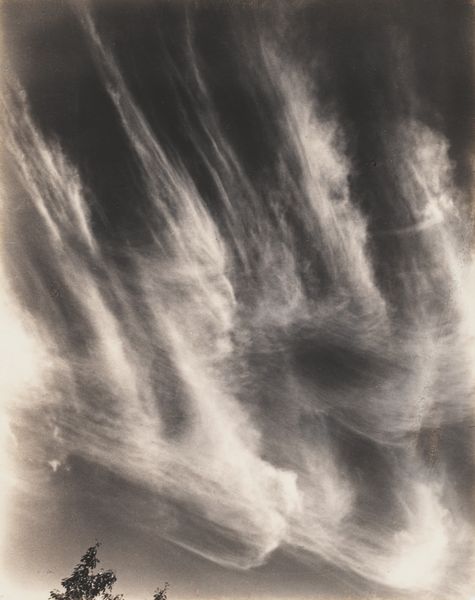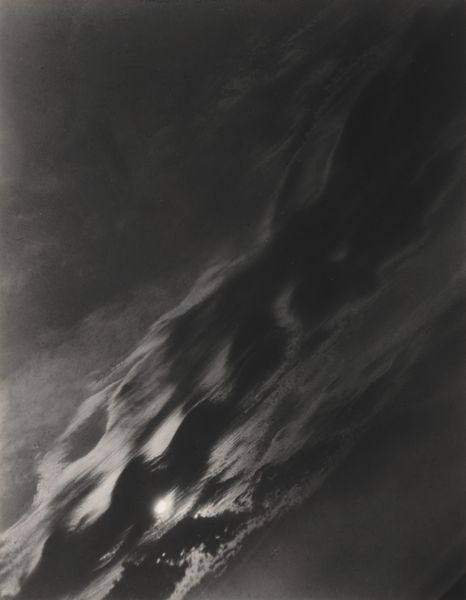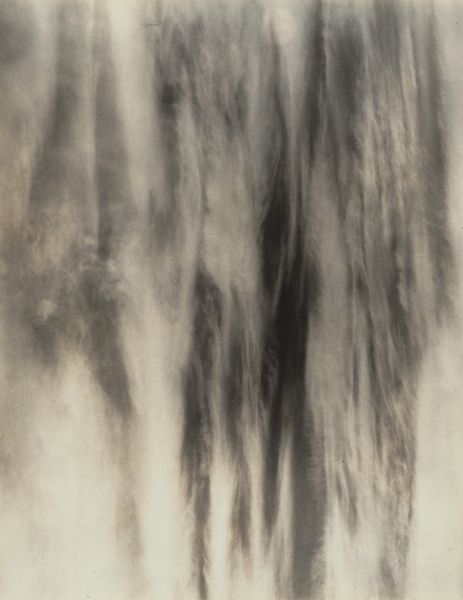
photography, gelatin-silver-print
#
still-life-photography
#
landscape
#
photography
#
gelatin-silver-print
#
monochrome photography
#
abstraction
#
modernism
Dimensions: sheet (trimmed to image): 11.9 x 9.2 cm (4 11/16 x 3 5/8 in.) mount: 34.2 x 27.3 cm (13 7/16 x 10 3/4 in.)
Copyright: National Gallery of Art: CC0 1.0
Curator: This is a captivating gelatin-silver print by Alfred Stieglitz, part of his Equivalents series, circa 1930. Editor: It has an ethereal, almost otherworldly quality. The soft gradations of grey and white create a dreamlike atmosphere. Are we looking at clouds? Curator: Yes, this series is all about clouds. Stieglitz was fascinated by them, viewing them as equivalents to his own feelings and experiences. It was his exploration into abstraction through photography. Editor: It feels so detached from the social realities of the 1930s, doesn't it? Was this a conscious choice on his part, a retreat perhaps? Curator: Definitely a retreat. Stieglitz sought to express universal emotions, and spiritual states beyond concrete reality. After all, the modernist art circles that he fostered were dedicated to “art for art’s sake”, beyond social or political issues. It also relates to how photography was seen as a means to access higher truths. Editor: Yet, aren’t feelings intrinsically linked to lived experiences? Can one truly separate emotion from the social and political contexts that shape us? I am wondering whether his decision to turn away from direct engagement can be viewed as a way to create new ways of expression given photography's inherent documentary qualities. How much agency do clouds, gender, or any representation, for that matter, allow if they're detached from their inherent meanings? Curator: That’s the tension in his work and why it is interesting. The clouds are both universal symbols and deeply personal expressions of the artist’s inner life. His efforts contributed significantly to the acceptance of photography as fine art in its own right. The Equivalents redefined how photographic images were seen and received in the artworld. Editor: He also was pushing against photography being perceived as purely objective or documentary, which in itself was quite revolutionary. It feels both radical and limiting. Still, the ambiguity within this image evokes contemplation of its symbolism in an almost poetic way. I get it. Curator: So you are almost convinced of its value, right? Its lasting appeal lies in its capacity to invite subjective interpretation, prompting us to reflect on the relationship between inner feelings and the external world. Editor: Well, art should prompt such reflection. And yes, I understand his contribution better now. Thanks!
Comments
No comments
Be the first to comment and join the conversation on the ultimate creative platform.
